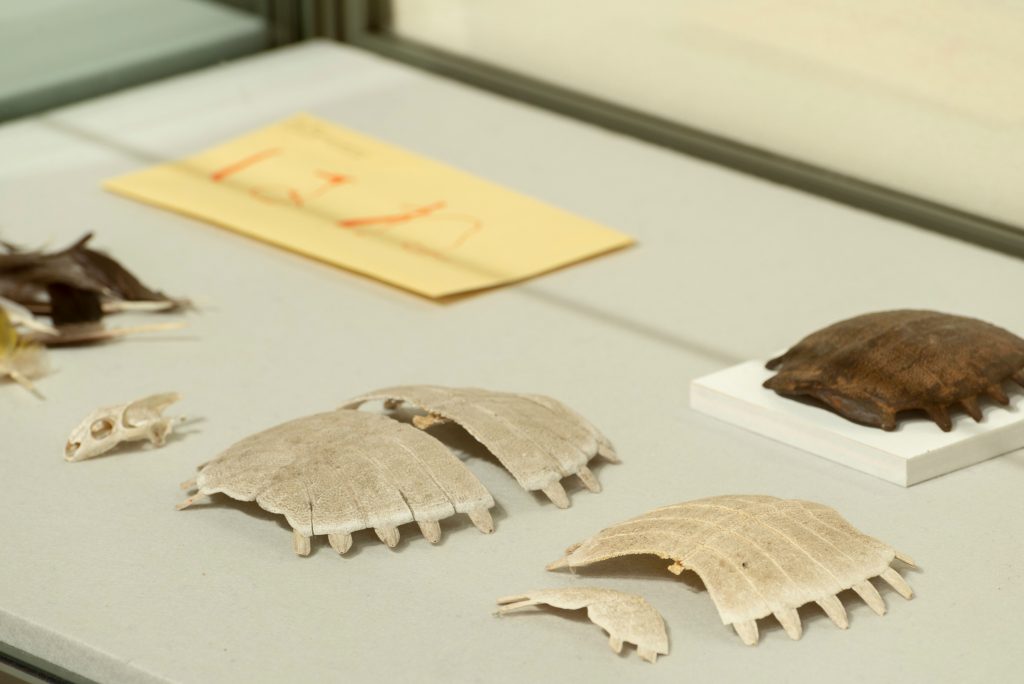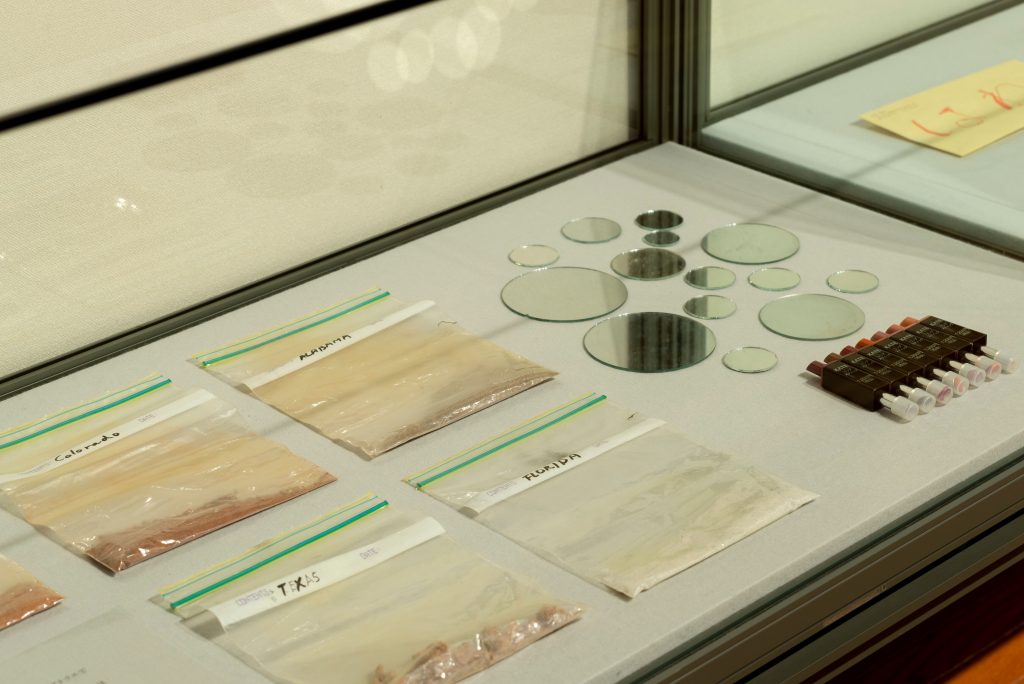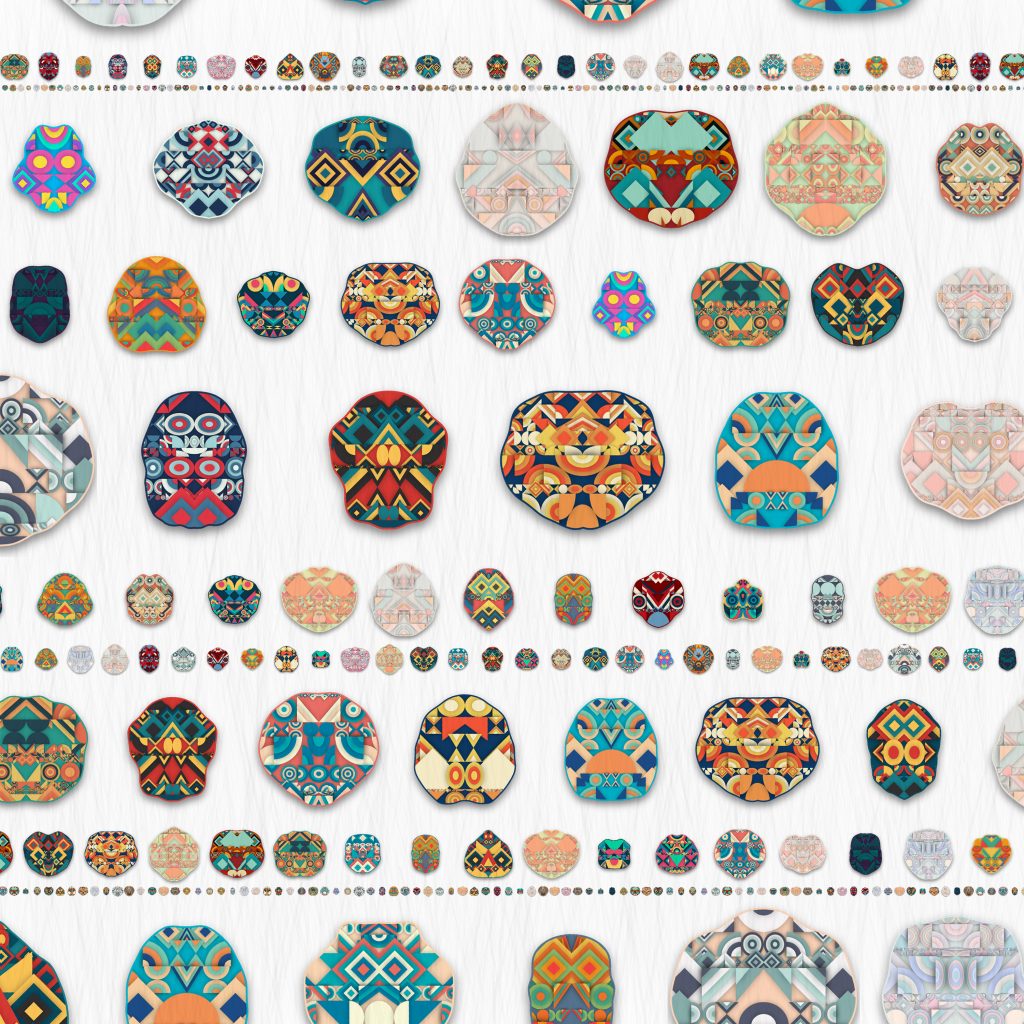When a work of art is found to be damaged or defective in some way, the cause of the damage should be analyzed and identified, and the work should be restored. They also analyze the materials and structure of the work in order to find the best way to preserve and store it. This role of the restorer is often compared to the relationship between people and their doctor. What factors should be considered as essentials to the work? What should be kept and what should be discarded? When confronting a work of art that has become a patient, these questions also touch on the identity of the work.
Kaori Taguchi, who specializes in conservation theory and the history of conservation and restoration, and who has served as a conservator for many exhibitions in Japan, is one of the restorers who have been confronting artworks in the world of minuteness. Especially since the emergence of contemporary art, the elements surrounding artworks have become more diverse, such as new materials and exhibition formats, and there is even a movement to acknowledge the “death” of artworks. In this article, we asked Taguchi about the current state of restoration, based on her book, Techniques and Ideas of Conservation and Restoration: From Ancient Art and Renaissance Paintings to Contemporary Art (保存修復の技法と思想: 古代芸術・ルネサンス絵画から現代アートまで).
Breaking Away from the Ideal of Selflessness in Restoration Theory
First of all, could you tell us why you decided to become a restorer?
When I was still a child, my parents took me to see a cathedral in Milan, and I was shocked. I was shocked to see that people could create such an amazing thing and that it could survive for such a long time. This is not just a matter of materials, there are many buildings in Italy that have survived wars, disasters, and the like, and are still standing thanks to the efforts of various people. I was really moved by the fact that I was looking at something that had survived so many crises. From that experience, one of the things I wanted to do in the future was to help preserve works of art for future generations.
The other was when I was thinking of going into conservation and restoration, and I was placed in a workshop in Florence as an apprentice for about a month. The owner of the workshop asked me what skills were most necessary for a restorer. I replied, “A good eye, I guess?” To which he said, “The important thing is how much you can remove yourself.”
He said that “whether the work is famous or valuable to art history, or if it matches your personal aesthetic sense—remove all such criteria and just look at what is in front of you. And it’s important to get rid of the desire to make it into something more than it is now or ‘more beautiful,’ and face it objectively. So, how close you can bring the influence of your own values, standards and ‘tastes’ to zero is the real training you need to become a restorer.
At the time, I was about 20 years old and was struggling with my way of life and occupation. Because at my age, people around me were actively looking for jobs, and I often saw them struggling to verbalize questions such as what are their personalities and characteristics, and what the things were that only they could do. It was during this time that I learned that there was a job in the world, and in the art world at that, where it was acceptable to “completely erase oneself,” rather than mastering “what only I could do.” I was curious about trying to erase myself, even if only for a moment in my life. Those were the two major factors.
After graduating from university, you went to Italy to study restoration techniques. What is the scope of your expertise as a restorer?
At the school I attended in Florence, there were courses in fresco, painting, and sculpture, and I was in the painting department. So I mostly worked on old-fashioned works such as golden tempera paintings, but I also worked on modern works, so the scope was wide.
Painting restoration techniques can be applied to a variety of objects, so I once fixed the door of a nobleman’s mansion. The doors of the villa of a descendant of the Medici family were beautifully colored and decorative, just like a painting or a sculpture, but I had to add color, stop peeling, clean, and reinforce the structure. As a painting restoration major, I also had to learn to restore picture frames, so I was trained to partially fill in missing frames, carve them, reapply foil, and restore colorful wooden sculptures. So, rather than specializing in something strictly, I felt like I left school having learned almost all aspects of restoration.
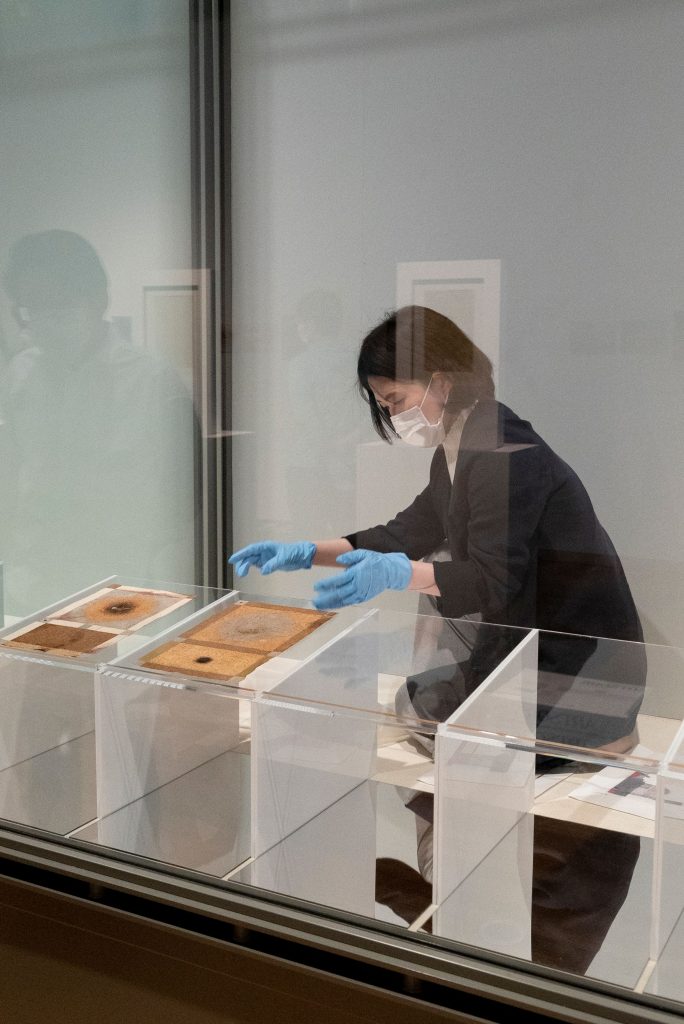
How do you usually do restoration work?
My affiliation is with the university, but I also belong to a workshop called “Mori Painting Conservation Workshop” as a visiting restorer, and this is where I do most of my hands-on restoration work. At the university, I do research and, when necessary, optical analysis. For example, from a small piece of a work of art, I analyze the structure of the layers and the type of paint used, scientifically identifying the cause of the damage, and sometimes taking CT scans of the work.
Do you decide which works you want to restore?
It’s not possible. We don’t proactively ask to restore work. The basic premise of restoration is that the less you do, the better. Even if a work is damaged, if it has been “stable” in that condition for a long time, we wouldn’t take the risk of working on it. Even in cases where restoration is necessary, we try to keep it as minimal as possible. However, if I am surveying a work in a museum’s collection, and I find some urgent damage or problem with the work during the process of preparing the survey documents (e.g., mold or peeling that could fall at any moment), I may suggest restoration to prevent accidents.
Reading your book and the catalogue of the exhibition “Timeline: Multiple Measures to Touch Time” (hereinafter referred to as “Timeline”) made me think about the seriousness of the responsibility of intervening in a work of art, and to what extent a work of art can be regarded as a work of art. This is an abstract question, but what do you consider to be the extent of a “work of art?”
When I am restoring, I try to look at the work simply as an object, and I don’t often think about the “scope” of the work. I think that the scope of a work of art is different for each work. For example, Terukazu Ida, whose work was featured in the Timeline exhibition, left a famous line, “Surface is the Between,” and his work is also characterized by the way he tries to go beyond the scope of the work itself and the concept of front and back.
In the case of Mr. Ida’s work, the more I investigated, the more I found the “backside” interesting, and I wondered if I could just exhibit the “surface” and call it a work of art. He dares to choose materials that are prone to deterioration, and he chooses certain techniques knowing that they will develop a smell over time. I thought that by understanding this background and incorporating it into the narrative, the work would stand up as a work of art for the first time. Therefore, for “Tantra” exhibited in the timeline exhibition, I made a plan to exhibit the front and back sides of the work equally, and disclosed all the information about the materials and techniques, in order to show the way the work moves between dimensions.
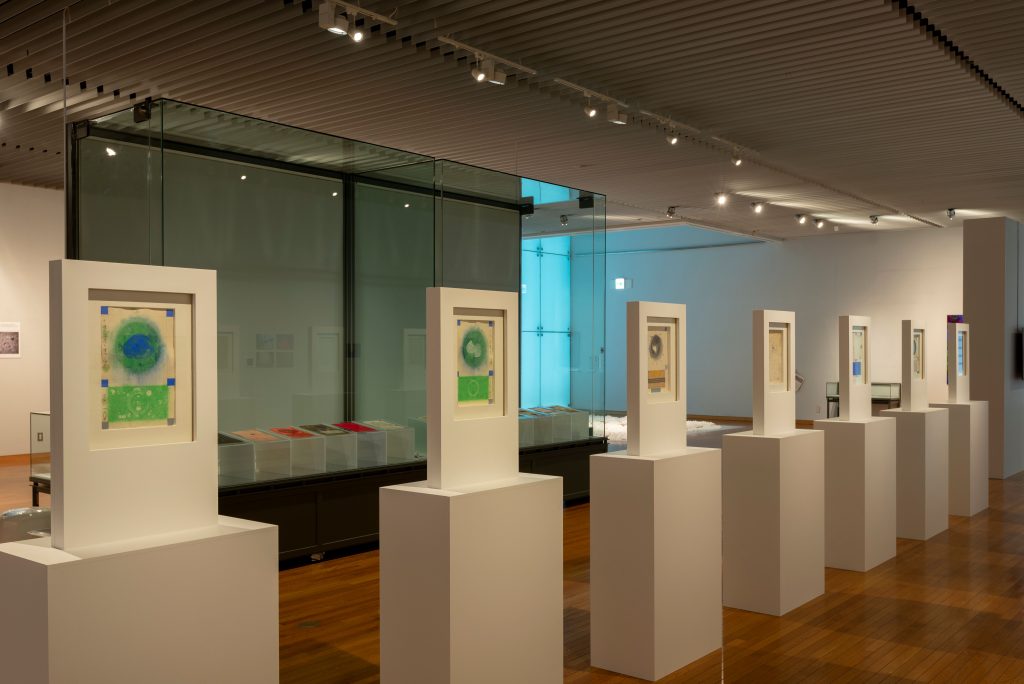
It is difficult to determine the extent of a work of art, isn’t it? I don’t want restoration techniques to “talk” too much and make the work look like a footnote, and I think I should basically be in a position to report only the facts as I see them with an objective eye. On the other hand, there are interesting things that can be learned from a conservation point of view. I’ve been thinking about what would happen if I incorporated these ideas into the exhibition, and I think I was able to put some of these ideas into practice as I worked with the artists in the Timeline exhibition to carefully construct the exhibition. Especially in “Tantra,” I felt the thickness of the things (time, materials, etc.) that accumulate in the work through the experience of “walking back and forth” between the front and back of the work as if my body were sewing. I discovered that the work is much freer than I had imagined.
It is one thing to “decide which works to keep in the archive,” but doesn’t that contradict what you said earlier about “erasing oneself”?
That’s an important question. I always struggle a lot with that. If I were to erase myself and do archiving, I would have to collect every existing work. But that is physically impossible, right? When you make a selection, you are bound to find yourself in it. As I worked on this project, I thought back to the words of my teacher at the workshop, and I began to think that it was impossible.
He was saying that the most important thing was the extent to which you could erase yourself right?
Yes. But there is no way I can erase myself. Even if you want to have that mindset, I think that when you work, the habits of your hands and eyes inevitably come out. When I think about how I’m going to do this work once I’ve accepted those things, I think the least I can do to take responsibility is to leave behind “what I thought about, what I chose, and as a result, what I decided to archive.”
To be specific, this means keeping a record of how the restoration method was chosen and the steps taken to intervene in the work, as well as specifying the materials used. By using a variety of media to preserve the rationale and background of the choices made, I believe that someone who encounters the work again in the future will be able to overcome the remaining issues and continue to think about how to preserve the work longer with less stress.
Recently, there seems to be a project collaborating with restorers to store the restoration history in the blockchain.
For example, there is a cavity in the interior of a Buddhist statue, which sometimes contains a nameplate with the names and dates of the people involved in the restoration. The structure is designed to hold the records inside the body itself. It is helpful for a restorer to have a record of the restoration of a work like that. When I was working in Italy, I remember being amused to find that on the back of a work I surveyed, there was written in small letters, “The surface had become a little white, so I applied olive oil on such and such date.” I guess he thought that oiling a painting that was getting cloudy would make it shiny and beautiful (laughs).
The Life and Death of the Work: How Should Others Relate to Works after Completion?
When I read your book, I felt that the work of a restorer is like that of a doctor, especially a surgeon. The steps of checking the patient’s condition when performing surgery, recording it in the medical record, and then going directly inside the body are just like a doctor’s hands. This view seems to be common, as the 20th century Italian art historian Brocacci, compared paintings in need of restoration to “sick people.”* Why is it that in the context of restoration, artworks are often compared to human life?
“There is no specific “disease” here. ‘There are only sick people.’”Kaori Taguchi, Conservation Techniques and Ideas: From Ancient Art and Renaissance Painting to Contemporary Art (Page 18)
There are a number of reasons for this, but it was not until the early 1900s that modern restoration was born and the idea of restoration that we know today was established. At that time, restorers began to appear as professionals, but until then, it was not uncommon for restoration to be violent. When nostalgia became popular, they would use coffee powder or squid ink to give the surface an old color, or they would over-clean the painting, saying that there was an old painting on the bottom layer, so keep washing away the top layer. In a sense, the current form of the work was created over time.
In the first half of the 1900s, people began to wonder if this was a bad idea. In the early 1900’s, people began to rethink the ageing process and the idea of art as an individual work of art that grows over time, as well as the idea that damage and loss is a way of being. This way of thinking may be similar in some respects to that approach to the human body and health. Reflections on past restorations and the idea of considering the value of a work of art over a longer span of time may have led to the current way of talking about “life” in artworks.
I heard that museums in several foreign countries recognize the “right of death” of artworks.
Yes. A conservator from overseas told me that when a work of art can no longer be exhibited, the museum stores it in a “temporary graveyard” in the collection room. “I personally think it is interesting to talk about the possibility of preserving individual artworks in the context of artworks having the right to die. Even if the work is in a state of suspended animation, it can still be referred to for research purposes, but it cannot be restored as a museum worthy piece when it cannot be displayed—in other words, the work is declared “dead” in a sense. However, it is very difficult to draw a clear line, and I think there are various problems in clarifying the basis for this. I have yet to say, “this is dead and cannot be restored.”
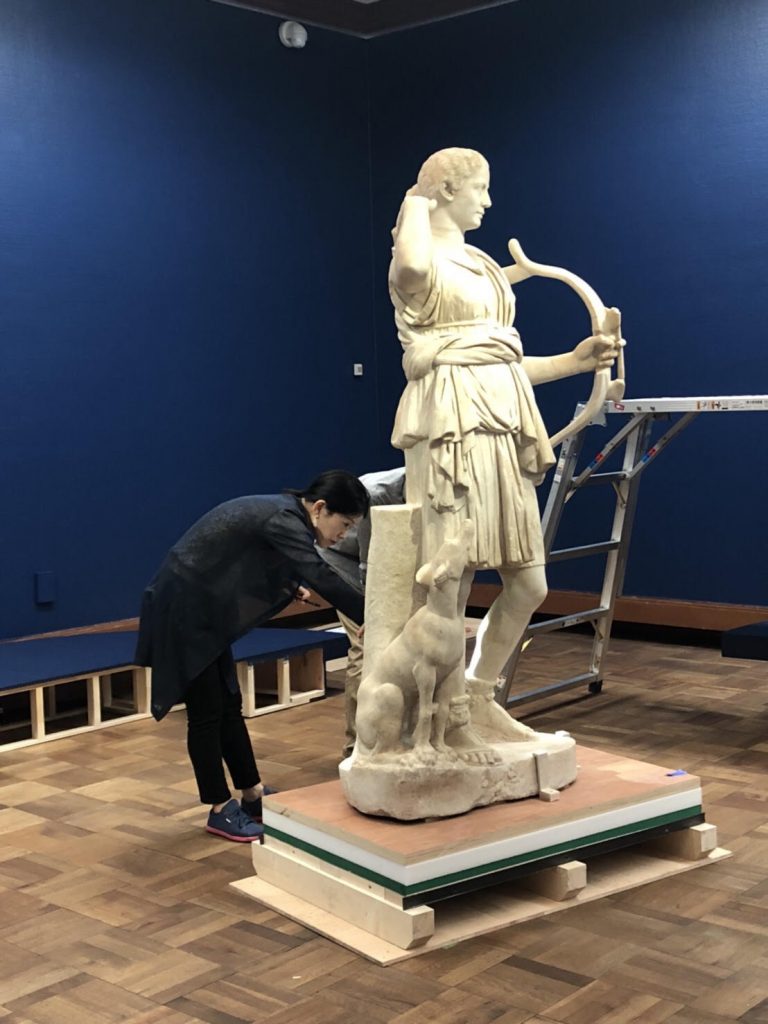
I read an article about a museum that bought a piece of work made of wax by Urs Fischer for a million dollars. The museum weighed the artist’s intentions and the nature of the work, and lit it on fire every day for six months to melt it little by little. After the wax is completely melted, it is cast again. I was genuinely surprised to see how the artist’s intentions are reflected even in a public place like a museum.
On the other hand, most of the discussion of the works in your book proceeded while the works were out of the artist’s hands, and that is why it gave me an opportunity to think again about who the works belong to. Since I work with artists as a curator, I tend to focus on the artist’s intentions. However, when I look at artworks as “public property” that includes posterity in the long run, it made me think that it is necessary to separate myself from the artist and have a dialogue with the artworks themselves.
When you have a problem with your work, you usually think of talking to the artist, right? The best thing to do is to consult the person who created the work. However, if the artist agrees to repair the work, there is a possibility that the work will be “revised” rather than repaired. In the history of conservation and restoration, such a point has often appeared. Many people argue that the artist should be separated from the restoration process if there is a possibility that when the work is returned from the artist’s possession, it will no longer be the same as when the artist commissioned the restoration.
However, working in this field, I think there is nothing more enriching than having a conversation with the artist. You get to know what happened during the process, what materials were used, what techniques were used, and under what circumstances the artist painted it. In fact, there is a lot of behind-the-scenes information such as “this happened while I was painting” or “I chose the materials in this way,” and these stories can provide hints for restoration. Therefore, I am opposed to excluding artists from the restoration process. I think it is best if we can decide how to deal with the problem by discussing the direction and risks of restoration with the artist based on the results of scientific analysis. It would be ideal if we could all think about the future of the work together.
It is often said that the word “curator” is derived from the word “cure” (to take care of). However, it occurred to me that it is not the curator but the restorer who is actually “taking care” of the work. When I think about it again, it is the “context” that the curator is taking care of, while the restorer is taking care of the physical aspect of the work. The curator protects the work.
In my mind, a curator is like the conductor of an orchestra. Someone who brings together unique performers to create a single work of art, someone who creates a place for a once-in-a-lifetime encounter. A restorer is someone who polishes, tunes, and re-sticks the leather on the instruments used by each person, and lends a hand to bring them to a better condition.
Even if a work is in a very precarious state, I believe that part of my job is to find a way to exhibit it without giving up. I always think that there must be more that can be done. Contemporary art, in particular, has different materials, shapes, and ways of changing over time. As with pre-modern paintings, where the best way to exhibit each piece is self-evident, it is often difficult to know “what is best” for each piece, but that is what makes it interesting. It is only by bringing the work to a state where it can be exhibited that the curator will adopt it, and I think my job is to find a way to get the work to that point.
There were already various examples but if you were to use an analogy, how would you describe the way you approach your work?
I’ve never really felt like a doctor, have I. I don’t think I’m capable of doing anything that big. I feel like I’m a lucky person to be able to see the work up close (laughs). I think the most interesting part of this job is being able to see the structure of the work from a very close distance, from the front and back. This “seeing” is important. I have to make hypotheses about materials and situations based on the information I see, so I am careful when I observe. However, since contemporary art does not have a long history, it’s difficult to make hypotheses and there are many situations where it is difficult to apply theories.
Perhaps it’s best to ask the artist.
Yeah, probably so. I also ask the curators who have exhibited the work, or the technicians and handlers who were present at the exhibition. I gather and organize the “eyes” of various people, and launch the project as I reconstruct the information.
The word “restorer” may give you the image of a person who works steadily by hand, but I also spend a lot of time in idleness, not moving my hands. I spend a lot of time in front of my work, just “looking” at it. But that’s really an important time, and I’m always thinking about how much I can see. It is also important to talk with the artist, but if the artist is not alive, or if the bereaved family or other people involved are not present, I have no choice but to talk with what is left behind.
Listening to you, I felt that the relationship between the work and the restorer is similar to the relationship between “fact” and “narrator” in a documentary. There is no escape from subjectivity once you intervene.
Restoration also involves “how I see it,” you know. That’s why I think it’s better to have many people telling stories about objects. By having many satellite narratives of how the work was viewed, the way the work is perceived becomes more three-dimensional. One of the satellites should be the view of the work as seen by the restorer. It would be interesting if we could have something where like a single work of art is discussed incessantly from various testimonies of art historians, curators, installers, and viewers.
In documentaries, when the subject of the story is no longer alive, there is a method of bringing out the image of the person by having the people involved talk about them.
Even if the work doesn’t exist and all we have is the memory of it, the work can continue to live on as people talk about it. I believe that such a “way of remaining” is one of the ways and methodologies of conservation and restoration.
In the future, more and more works will exist only in data form, so the nature of restoration itself is likely to change.
That’s right. The amount of data is enormous, and the playback devices are not always available, so in some cases you have to be in a state of ghosting, constantly looking for a mother to transfer to. The need to keep thinking about emulation is a big difference from paintings and sculptures, where old mediums ensure a certain degree of sustainability and robustness. Even if you can reproduce a work, the sound and light may be cleaner than before, and the original roughness may have disappeared. Even if the work is reproduced in a different medium, if there is even a single record of what it was like in the form of images or narratives, there will be a bridge, and the way it is perceived will be very different. That’s why I think it will become more important to properly document the collection in the future.
